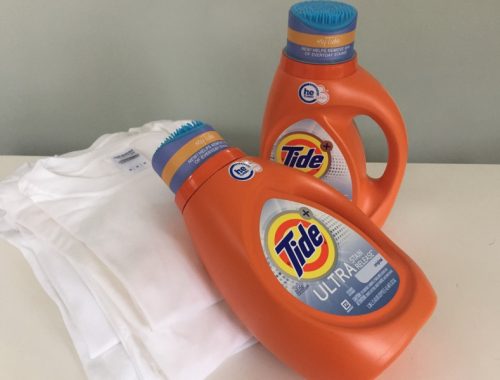If you want your children to be skilled and creative problem solvers, consider preparing outdoor play spaces for imaginative play! Fantasy play and imaginative role playing, in spaces like fairy gardens, are well established pre-cursers to divergent and original problem solving later in life; skills that are well recognized in highly effective students! Fairy Gardens are a great way to encourage imaginative play and they are perfect for taking advantage of the magical thinking young children bring to their everyday play.
Step one: Find a spot for your garden!
You don’t need much for a fairy garden! Just a small space (or a larger pot) that is easily accessible. This garden area was located in a mostly shady and safe place to play in a back lane.
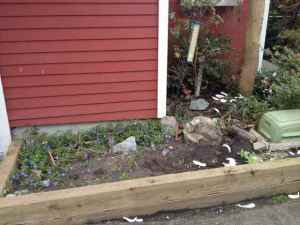
Step two: Gather materials that encourage imaginative play!
We began by creating fairy houses with materials that we sourced from our local dollar store. Some twigs we found in the woods and some moss from logs were glued onto the mini birdhouses, with magical results! The kids, ages 3 & 6, also painted a few other houses that we sealed with a clear and waterproof coat of Modge Podge.
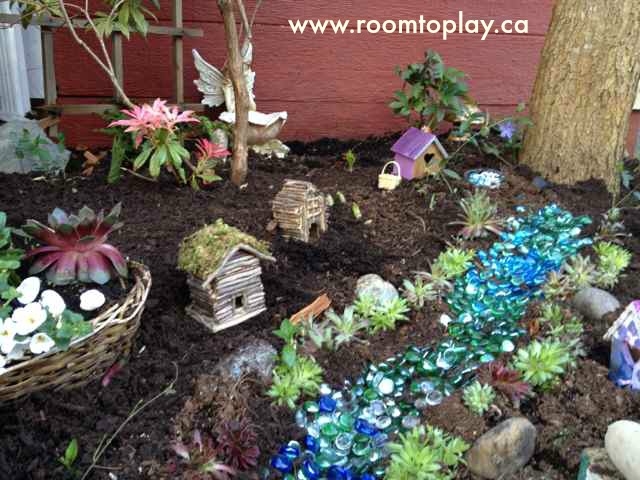
We found these adorable gnomes at the dollar store too! The “river” is lined with dollar store jewels and stones, while the miniature clothesline and basket invite imaginative play. Toadstools, mushrooms and fairies are hidden amongst the shade loving hostas! Oyster shells covered in barnacles gathered from our local beaches add a connection to nature that extends beyond the play space. The total cost for garden toys and decor was less than $20.

Step three: choose appropriate plantings for your play area
Shade tolerant plants like hostas, ferns, hellebores, miniature lemon cedar and lamb’s ear are added to create texture and intrigue to the garden. We used succulents called “hens and chicks” to line the river bed. Using levels of plantings with baskets and stones adds texture and variety to the play space. We are seeing our local garden stores put out displays of plantings specifically for the purpose of planting fairy gardens, ask yours for recommendations appropriate for the sunny or shady location you’ve chosen.
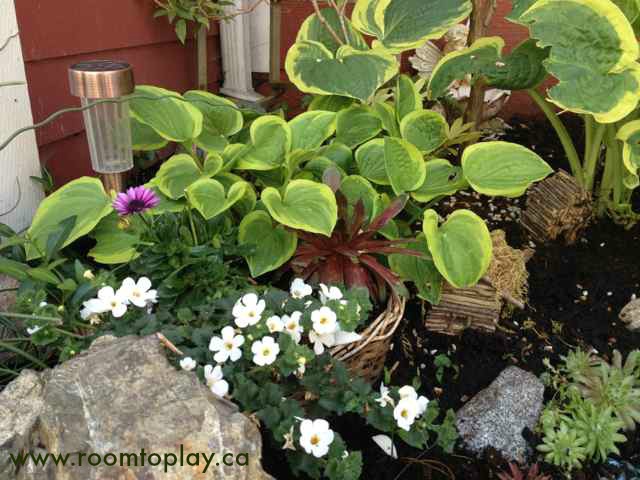
The best part about gardening with kids is the patience they learn from observing growth over time. Here is the same garden, one year later! As plantings grow or die off, problem solve ways to change and develop the fairy garden! Want to know more? Book us to speak to your group about the research that supports the value of imaginative play in children’s later abilities to problem solve. We will walk you through possibilities for creative open-ended play spaces that allow children the freedom to express their imaginations in a way that teaches the brain to be flexible.
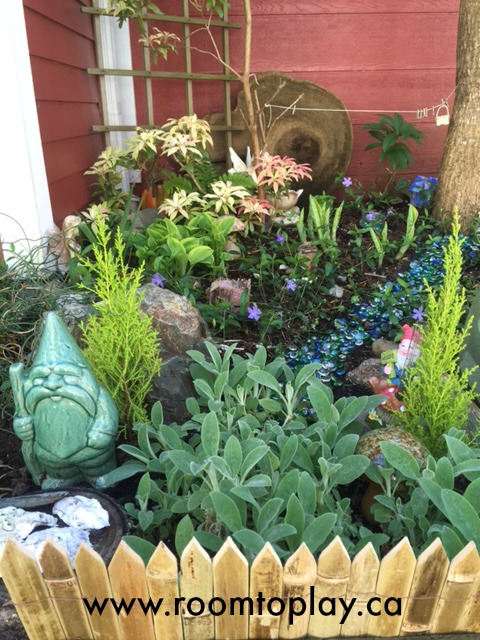
Previously published at Room to Play.
Megan Zeni is a play advocate, elementary school teacher and blogger at Roomtoplay.ca Her newest passion project is The Classroom Gardener, where she helps teachers get students outdoors and learning with the redesigned curriculum in school-yard gardens. She lives in Steveston with her husband and three outdoor loving kids. You can follow her on Facebook, Twitter, Pinterest and Instagram.
Related
Neverland: a Gender Neutral Birthday Bash that’s Fun for Everyone
How to Sprout Amaryllis Bulbs for Your Winter Garden
How to Make a Beautiful Weed Bouquet Centerpiece


